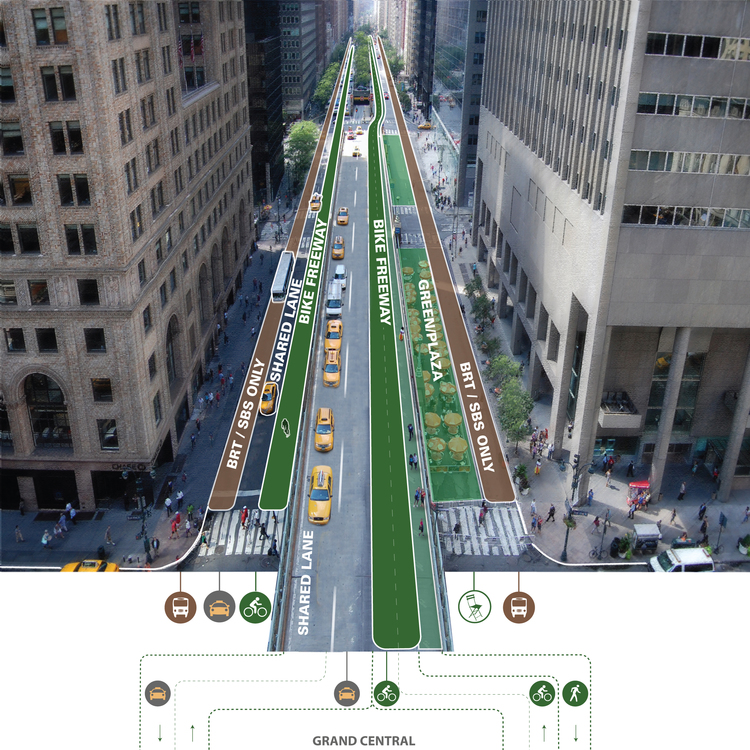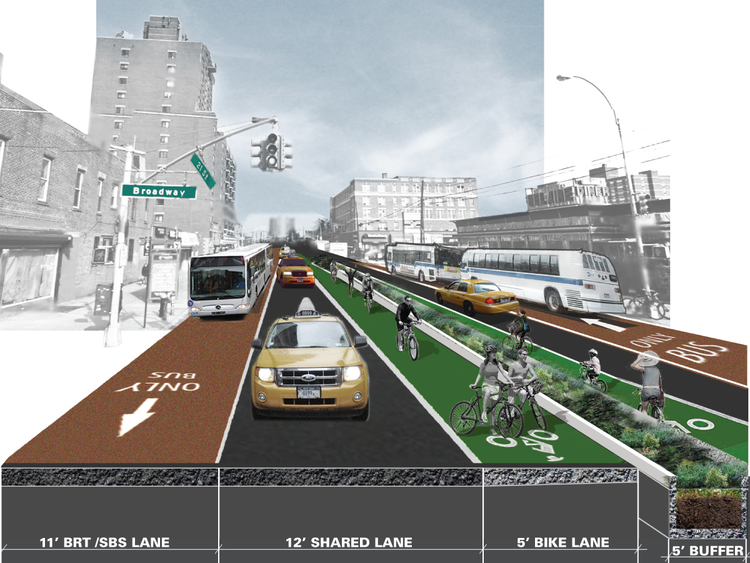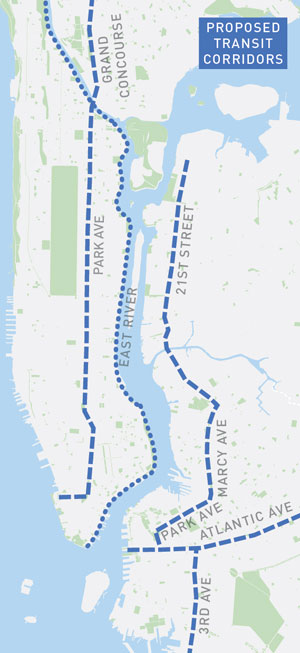
The New York City streetscape should be designed for increased and evolving modes of transit. Think of it as Complete Streets 2.0: car-free streets with linear parks, protected bike lanes, and mass transit. These kind of parkway connections would contribute to reducing the heat island effect as well as reducing fossil fuel use.
We propose to pair a surface mass transit line—Select Bus Service or future Light Rail—with long-range bike corridors. These streets would be limited to shared vehicles, including taxis, carpools, and electric vehicles. By providing a diversity of opportunities for bicycles, transit, and carpools, we can allow a greater capacity of travellers, new social gathering spaces, and shared capital investment.
Imagine a park on Park Avenue, extending from Chambers Street in Lower Manhattan north to the Grand Concourse in the Bronx. We could link the growing edge of creative workplaces from Sunset Park to Astoria by creating a corridor along 3rd Avenue, Park Avenue, Marcy Avenue, and 21st Street. We could complete a major corridor along Brooklyn’s Atlantic Avenue to provide a direct link to the waterfront from Barclays Center. And finally, we could create a continuous greenway link along the East River in Manhattan, from Battery Park to Sherman Creek.

